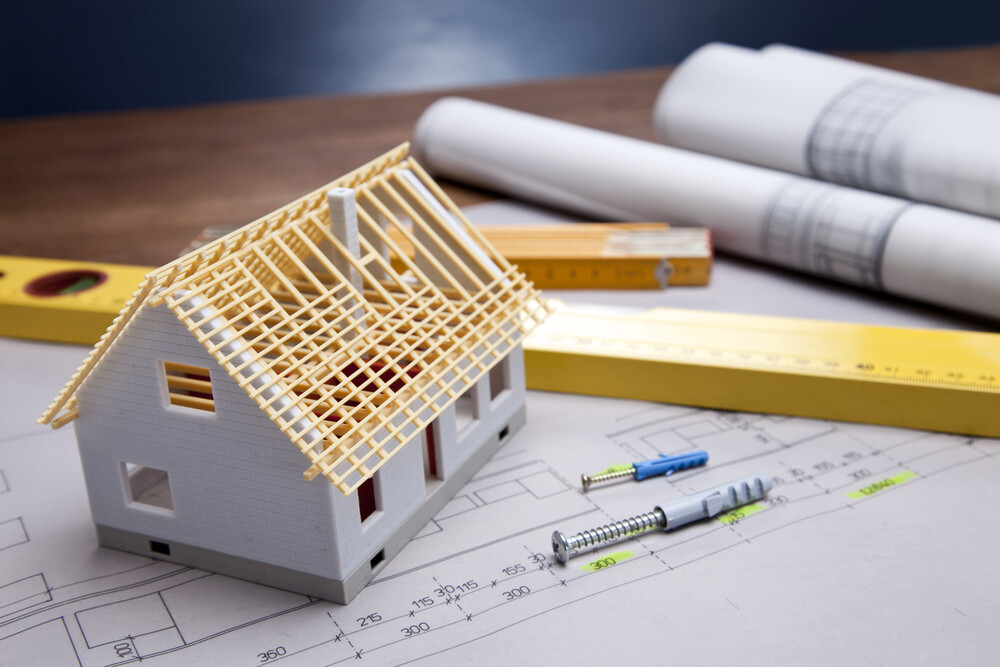How Do Building Dispute Lawyers in Sydney Resolve Defective Work Claims Effectively?
What Are Defective Work Claims in Sydney’s Construction Sector and Why Do You Need Legal Assistance?
Defective work claims arise when construction or renovation work fails to meet required standards, creating structural issues, safety hazards, or aesthetic problems. These claims represent a significant concern in Sydney’s construction industry, where homeowners frequently discover faults ranging from cracked foundations and water penetration to non-compliant electrical installations.
The complexity of defective work claims stems from multiple factors that make professional guidance from building dispute lawyers Sydney essential:
- Technical assessments require distinguishing between cosmetic issues and serious structural defects
- Statutory timeframes impose strict deadlines for lodging claims under construction law NSW
- Documentation requirements demand comprehensive evidence of defects, costs, and attempted resolutions
- Builder responses vary from cooperative rectification to complete denial of responsibility
Building dispute lawyers Sydney specialise in protecting homeowners’ rights when builders deliver substandard work. They understand how to navigate the Home Building Act 1989, assess whether defects qualify as “major” under legal definitions, and determine the most effective resolution pathway.
Legal assistance becomes crucial when builders refuse to acknowledge defects, disputes escalate beyond simple negotiations, or insurance claims require formal lodgement. Without expert representation, homeowners risk missing critical deadlines, accepting inadequate settlements, or facing costly litigation unprepared. Lawyers ensure claims are properly documented, statutory warranties are enforced, and homeowners receive appropriate remedies through negotiation, tribunal proceedings, or court action.
Which Legal Framework Governs Defective Work Claims in Sydney?
The Home Building Act 1989 establishes the primary legal foundation for defective work claims in NSW. This legislation provides automatic statutory warranties NSW that protect homeowners regardless of what’s written in their building contract. These warranties guarantee workmanship and materials for 6 years for major defects and 2 years for other defects from the completion date.
What are Major Defects?
Major defects under the law involve structural failures or issues that make a building uninhabitable or unsafe. Examples include:
- Significant cracks in load-bearing walls or foundations
- Defective waterproofing causing water penetration
- Structural inadequacy in roof framing
- Fire safety non-compliance affecting building integrity
The Design and Building Practitioners Act 2020 complements this framework by imposing a duty of care on building practitioners. This legislation holds designers, engineers, and builders accountable for their work throughout the building’s lifecycle. The Act requires practitioners to register with NSW Fair Trading and maintain professional standards, creating additional avenues for homeowners to pursue claims against negligent professionals.
Both pieces of legislation work together to create a comprehensive protection system. The Home Building Act 1989 focuses on contractual warranties and builder obligations, while the Design and Building Practitioners Act 2020 extends responsibility to all professionals involved in the design and construction process, ensuring accountability across the entire building chain.
How Do Building Dispute Lawyers Handle Complaints About Defective Work?
Building dispute lawyers guide clients through the NSW Building Commission complaint handling process as the first formal step in addressing defective work. The Commission provides a structured pathway where homeowners can lodge complaints against builders or contractors, seeking resolution through mutual agreement or inspector assessment.
Role of Building Inspectors
Building inspectors NSW play a critical role once complaints are formally registered. These inspectors conduct site visits to evaluate major defects or incomplete work, providing technical assessments that document the extent and severity of construction issues. Their reports form essential evidence for subsequent legal action if needed.
Boundaries of the Inspection Process
The inspection process has clear boundaries:
- Inspectors focus specifically on major defects and incomplete work claims
- General building inspections or minor defect assessments fall outside their scope
- Their findings help determine whether statutory warranty breaches have occurred
Dispute Resolution Mechanisms
Dispute resolution mechanisms extend beyond initial complaint handling when parties cannot reach agreement. Lawyers advise clients on escalation options when:
- Builders refuse to acknowledge defects identified by inspectors
- Proposed rectification solutions prove inadequate
- Time delays exceed reasonable expectations
- Communication between parties breaks down completely
The Commission’s complaint service provides a foundation, yet many defective work claims require formal tribunal or court proceedings to achieve satisfactory outcomes. Lawyers prepare clients for this progression while exploring settlement opportunities at each stage.
What Dispute Resolution Processes Do Lawyers Use to Settle Defective Work Claims?
Building dispute lawyers guide clients through multiple resolution pathways, starting with thorough assessment of contractual rights under the Home Building Act 1989. They review contract terms, warranty provisions, and statutory entitlements to determine the strongest approach for each claim.
Alternative dispute resolution Sydney methods form the first line of defence against costly litigation. Mediation construction disputes allow both parties to negotiate settlements with lawyer guidance, often preserving working relationships whilst achieving practical outcomes. These confidential sessions typically resolve issues faster and cheaper than court proceedings.
Arbitration provides another avenue where an independent arbitrator makes binding decisions on defect claims. Lawyers prepare detailed submissions, expert reports, and evidence packages to support their client’s position during these private hearings.
When informal resolution fails, legal representation becomes essential for NCAT hearings defective work cases. Lawyers present evidence, cross-examine witnesses, and argue legal points before tribunal members. They handle procedural requirements, submission deadlines, and compliance with tribunal directions.
Supreme Court proceedings represent the final escalation point for complex or high-value claims. Lawyers manage the formal litigation process, including:
- Drafting statements of claim and legal pleadings
- Conducting discovery and document production
- Engaging expert witnesses for technical evidence
- Presenting comprehensive legal arguments at trial
Each pathway requires specific expertise in construction law, procedural knowledge, and strategic timing to maximise client outcomes.

How Do Lawyers Address Contractual and Insurance Issues Related to Defective Work?
Building dispute lawyers protect clients by scrutinising building contracts Sydney arrangements before work commences and ensuring proper insurance coverage exists throughout the project. They review contract terms to establish clear obligations regarding workmanship standards, defect rectification timeframes, and available remedies if problems arise. Click here to learn about what does a Family Lawyer in Perth do if a court order is breached?.
Contract drafting and review focuses on:
- Specific descriptions of work scope and quality standards
- Explicit defect notification and rectification procedures
- Payment schedules tied to satisfactory completion milestones
- Dispute resolution clauses outlining escalation pathways
Lawyers explain home warranty insurance NSW requirements under the Home Building Compensation Fund, which provides essential financial protection for homeowners. This mandatory insurance covers residential building work exceeding $20,000 and protects against:
- Loss of deposit money (up to 10% of contract price)
- Incomplete work due to builder insolvency or death
- Defective work requiring rectification
- Non-compliance with statutory warranties
The Home Building Compensation Fund becomes particularly valuable when builders become insolvent or disappear before completing repairs. Lawyers guide clients through the claims process, gathering necessary documentation including contracts, correspondence, and defect reports. They assess whether defects fall within the insurance policy’s scope and assist with lodging claims within the six-year limitation period for major defects or two years for minor defects.
What Specialist Expertise Supports Effective Resolution of Defective Work Claims?
Building dispute lawyers rely on technical defect assessment from qualified construction professionals to substantiate claims. Structural engineers, building surveyors, and quantity surveyors provide detailed reports identifying defects, their causes, and rectification costs. This construction expert advice transforms subjective complaints into objective evidence that tribunals and courts recognise.
The collaboration extends beyond simple inspections. Experts conduct forensic investigations using specialised equipment to detect hidden defects like water ingress, structural movement, or non-compliant materials. Their cost assessments establish realistic compensation figures or rectification budgets, preventing disputes over claim values.
Understanding the Complexity of Strata Scheme Disputes
Strata scheme disputes require particular expertise due to their complexity. Lawyers handling common property defects must navigate the Strata Schemes Management Act 2015 alongside building legislation. These cases often involve multiple unit owners, owners corporations, and original developers, creating intricate liability questions.
Key Areas of Understanding for Common Property Maintenance Disputes
Common property maintenance disputes demand understanding of:
- Shared responsibility boundaries between lot owners and owners corporations
- Defect liability periods for strata developments
- Special levy requirements for major rectification works
- Insurance coverage under strata building policies
Lawyers coordinate with strata managers, building consultants, and forensic accountants to build comprehensive cases. This multi-disciplinary approach proves essential when defects affect entire buildings or require coordinated remediation across multiple properties. For instance, addressing building failure strategies can provide valuable insights into managing such complex disputes effectively.
What Outcomes Do Building Dispute Lawyers Aim to Achieve for Their Clients?
Building dispute lawyers prioritise two primary outcomes when handling defective work cases: securing rectification orders NSW that compel builders to repair defects, and obtaining financial compensation when repairs prove impossible or inadequate. These objectives form the foundation of effective claim resolution strategies.
1. Rectification Orders
Rectification orders represent the preferred remedy in most defective work disputes. Lawyers work to obtain tribunal or court orders that require builders to fix identified defects within specific timeframes, typically 60 to 90 days. These orders detail the exact scope of repairs needed, establish clear deadlines, and outline consequences for non-compliance. The approach ensures homeowners receive the quality of work they originally contracted for without bearing additional costs.
2. Compensation Claims
When rectification becomes unfeasible—whether due to builder insolvency, business closure, or continued non-compliance—lawyers pivot to pursuing compensation claims defective work. This involves:
- Calculating the full cost of engaging alternative contractors to complete repairs
- Documenting consequential losses such as temporary accommodation expenses
- Claiming diminished property value resulting from unresolved defects
- Recovering legal costs and expert assessment fees
Lawyers present comprehensive evidence packages to NCAT or the Supreme Court, demonstrating both the extent of defective work and the financial impact on homeowners. They leverage statutory warranties under the Home Building Act 1989 to strengthen compensation claims, ensuring clients receive adequate financial remedies that reflect genuine losses incurred.

Conclusion
How do building dispute lawyers in Sydney resolve defective work claims effectively? They combine statutory remedies under the Home Building Act 1989 with strategic dispute resolution methods tailored to each case’s unique circumstances.
Effective defective work resolution Sydney relies on three core pillars:
- Statutory protections that establish clear timeframes and obligations for builders
- Alternative dispute resolution through mediation and arbitration to achieve faster, cost-effective settlements
- Tribunal representation at NCAT when negotiated solutions prove unsuccessful
Building dispute legal strategies prioritise preserving client interests whilst maintaining professional relationships where possible. Lawyers assess each claim’s technical and legal merits, engage expert witnesses for defect evaluations, and navigate insurance complexities under the Home Building Compensation Fund.
The most successful outcomes emerge when lawyers act early, advising clients on contractual rights before disputes escalate. Whether securing rectification orders or pursuing compensation through formal proceedings, experienced building dispute lawyers provide the specialist knowledge homeowners need to protect their investments and enforce their rights under NSW construction law.
FAQs on Defective Work Claims in Sydney
A defective work claim arises when construction or renovation work fails to meet required standards, resulting in structural faults, safety hazards, or aesthetic issues. Homeowners can seek remedies under NSW law.
The Home Building Act 1989 provides statutory warranties for major and minor defects, while the Design and Building Practitioners Act 2020 imposes a duty of care on all building professionals, ensuring accountability across the design and construction process.
Major defects involve serious structural or safety issues, such as:
Cracks in load-bearing walls or foundations
Defective waterproofing causing water penetration
Roof framing failures
Fire safety non-compliance
Lawyers help navigate complex legislation, strict statutory deadlines, insurance claims, and dispute resolution processes. They ensure proper documentation, enforce statutory warranties, and protect homeowners’ legal and financial interests.
Lawyers coordinate with qualified building inspectors, structural engineers, and surveyors to assess defects, differentiate between cosmetic and major issues, and prepare evidence for tribunals or courts.
Options include:
Mediation for informal negotiated settlements
Arbitration for binding decisions by an independent arbitrator
NCAT hearings for tribunal-based resolutions
Supreme Court proceedings for complex or high-value claims
